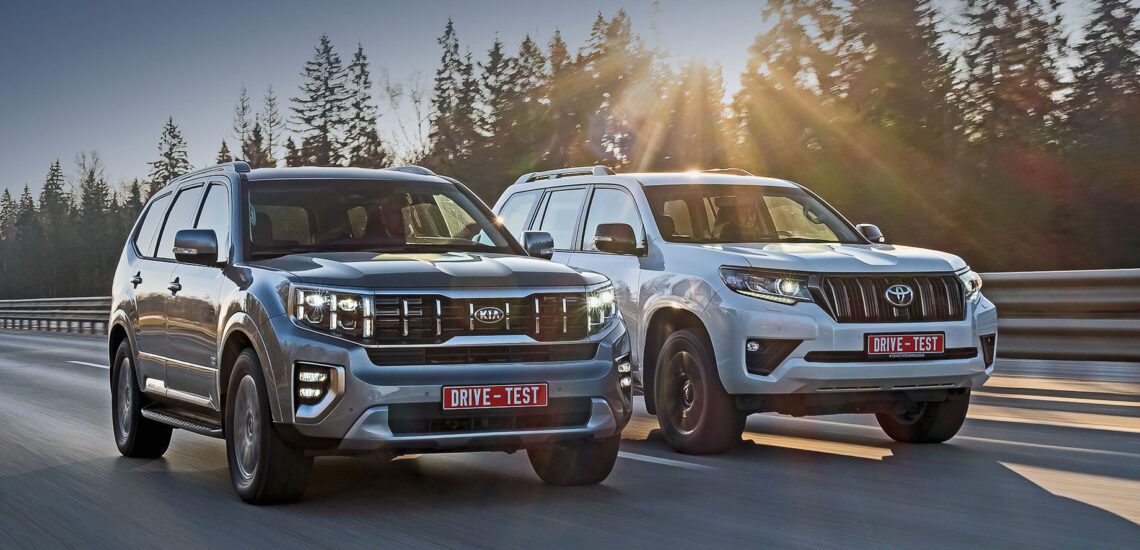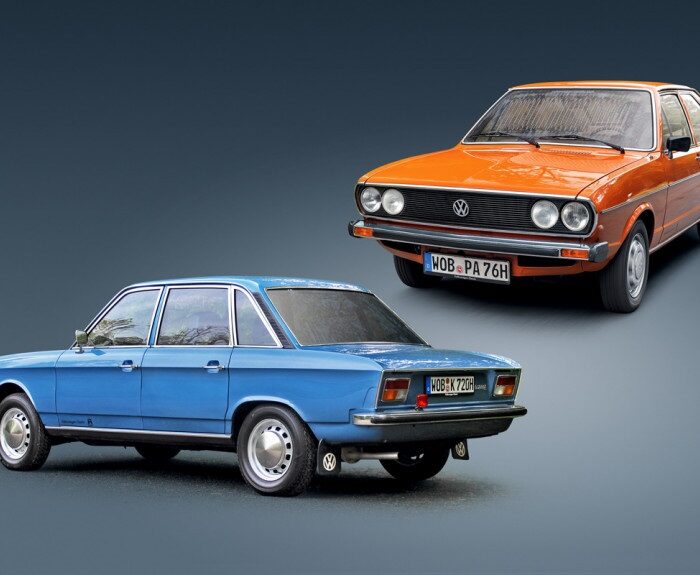Je propose d’abandonner tout de suite la thèse selon laquelle ils ne sont pas concurrents. Les beaux calculs des spécialistes du marketing de KIA, selon lesquels le cadre Mohave est positionné en dessous du Prado, n’ont pas grand-chose à voir avec la réalité, où l’acheteur interagit avec le commerce de détail. Nous avons interrogé six concessionnaires de chaque marque et nous avons découvert qu’au fur et à mesure que les cent premières voitures étaient vendues, la marge sur le Mohave sans les étapes spéciales atteignait 17 700 dollars. Le même montant, par exemple, est aujourd’hui demandé pour une place dans la file d’attente d’un rare Cayenne!
Le Prado 2.8 Prestige testé ne diffère que par sa couleur de celui qui a participé à la précédente comparaison des SUV à châssis, où un Toyota similaire avec des stabilisateurs adaptatifs KDSS qui nuisent au confort de conduite ne sera pas cédé à moins de 88.500 $, bien qu’à un prix inférieur à 74.000 $. Ainsi, un écart de 8 800 dollars est maintenu dans le cadre du test. Il est plus facile de comparer les systèmes de bord des deux Prestige que les versions de base, et il est plus facile de voir qui en a le plus pour son argent.
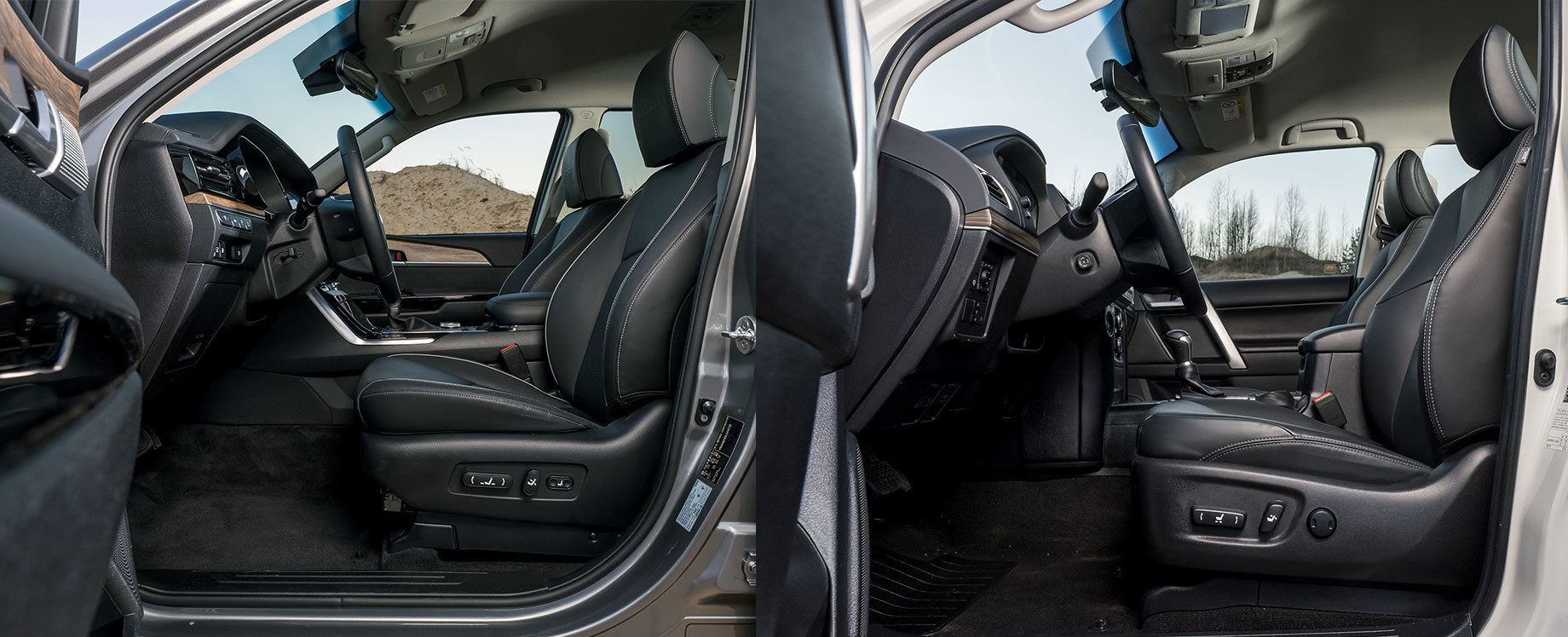
Tout d’abord, le Mohave est un véhicule à sept places, et pas nominalement : avec une taille de 6’1, je m’assois avec une petite marge au niveau des genoux, tant à la deuxième qu’à la troisième rangée. L’empattement est tout de même plus long de 4,5 pouces que celui de la Toyota. La Kia est plus facile à pénétrer grâce à de larges ouvertures et à un angle d’ouverture des portes plus généreux. L’habitacle est légèrement plus large aux épaules et d’apparence plus moderne, mais il y a plus d’espace au-dessus de la tête et devant les genoux dans le Toyota. Les deux sièges dans le coffre du Prado n’apparaissent que dans la version supérieure Black Onyx, dont le prix recommandé est de près de 85 000 dollars. Le prix de détail est d’environ 97 000 dollars. Kia est plus rentable si l’on considère le nombre de voitures vendues.
Prados, bien sûr, sont achetés plus avec le moteur diesel 2,8 1GD-FTV, qui, vous vous souvenez, vient de devenir 200 ch. Depuis le restylage en 2016, quelque part Mohave utilise exclusivement un V6 turbodiesel de trois litres de la série S-II, inscrit en préférentiel 249 ch, associé à une boîte automatique Hyundai Powertech à huit rapports. Et, à mon avis, ce tandem est le principal atout de Kia.
L’unité de puissance, injustement négligée par les créateurs des voitures Hyundai-KIA, fonctionne avec un minimum de vibrations, aussi bien au ralenti qu’en mouvement. Et quand on passe en mode Sport, la rotation passe à deux mille, et le Mohave répond à toute commande d’un accélérateur bien chargé avec un véritable enthousiasme. Le son est silencieux, dense et agréable. S’il y a un grain synthétique, dû au processeur du système audio, il est bien dissimulé.
Les capacités de limitation et la commodité du contrôle de l’accélération sont supérieures à celles de leur catégorie. Si vous lisez les commentaires des propriétaires, il s’avère qu’à un kilométrage élevé, la boîte de vitesses automatique s’emballe parfois. Mais lorsque le compteur est inférieur à deux mille kilomètres, les changements de vitesse sont aussi logiques que rapides et souples. La boîte permet de freiner avec le moteur, ce qui est utile dans une ville encombrée de caméras. Pour descendre de quelques kilomètres par heure, il suffit d’appuyer sur la pédale d’accélérateur. Mohave n’est pas pressé de passer immédiatement à la vitesse supérieure ou de désactiver la transmission à la dernière mode, et si la pente est raide, il se range avec tact à la vitesse inférieure.
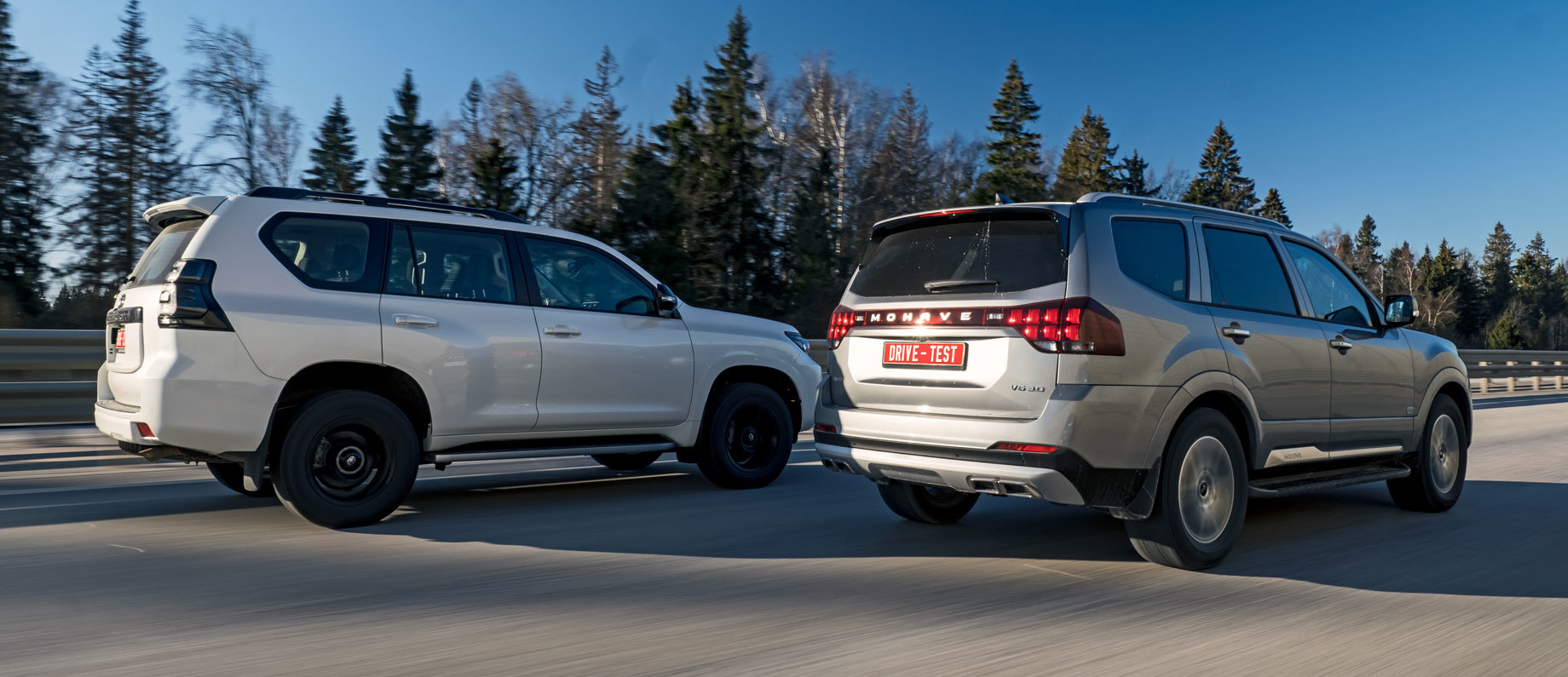
En un mot, il n’y a pas de questions sur le fonctionnement de l’unité de puissance – certainement pas en comparaison avec la Toyota de 200 chevaux. Il semblerait que la différence soit minime – 204 cbm, près de 50 ch et près de 50 N-m – d’autant plus que les deux voitures avec chauffeur sont tirées par 2,3 tonnes. Mais les sensations sont contrastées. Même si le Prado pèse moins lourd, le travail confié à son turbodiesel est plus difficile. Sur toute la plage de vitesse, il maintient une vitesse un peu plus élevée, fait beaucoup plus de bruit et consomme plus de carburant. Et compte tenu de la plus grande capacité de charge du LC150, le moteur quatre cylindres n’a rien à lui envier.
Le contrôle de l’accélération est un casse-tête : l’accélération de Toyota doit être écrasée. Les réponses à l’alimentation en carburant ne sont pas linéaires, vous utilisez une pédale fortement amortie aux grands angles. Le convertisseur de couple ne se bloque pas dans les rapports inférieurs, ce qui entraîne un « flottement » du régime alors que la position de l’accélérateur reste inchangée. Le moteur quatre cylindres de 2,8 litres affiche de magnifiques roulades, chargeant les commandes d’un cliquetis distinct. Il vibre fortement lors de la conduite en tension sur la mise à niveau, à peine le régime descend-il en dessous de mille et demi. En descente et en accélération, le Prado ralentit avec le moteur uniquement en mode manuel. Le rapport prix/dynamisme n’est pas en faveur du flegmatique LC150.
Les deux voitures sont chaussées de pneus d’hiver non cloutés de même dimension 265/60 R18. Mais le Mohave utilise les Hakkapeliitta R3 SUV, et le Prado les VikingContact 7. Et tout ce que j’aime dans ce Continental n’est pas bon pour Toyota. Grâce en grande partie au Viking, le Prado est plus silencieux que le Mohave et lisse mieux le micro-profil de l’asphalte. Mais la tenue de route et la stabilité en ligne droite souffrent de la souplesse de la bande de roulement et des tractions.
Par rapport aux essais du Bridgestone d’été, le châssis semble peu dynamique. Sans compter que les freins douteux font peur avec un blocage prématuré sur la neige fraîche et une sensation d’huile sous les roues lors d’une décélération brutale sur le bitume. La distance de freinage à partir de 60 miles/h est de plus de 164 pieds. Les pneus Nokian de Kia, en revanche, sont plus bruyants et plus rigides, mais ils plaisent avec ténacité. L’adhérence de l’avant et de l’arrière sur la neige est une agréable surprise compte tenu du poids de la voiture et s’harmonise avec les réglages du système de freinage antiblocage, qui n’a pas tendance à s’affoler.
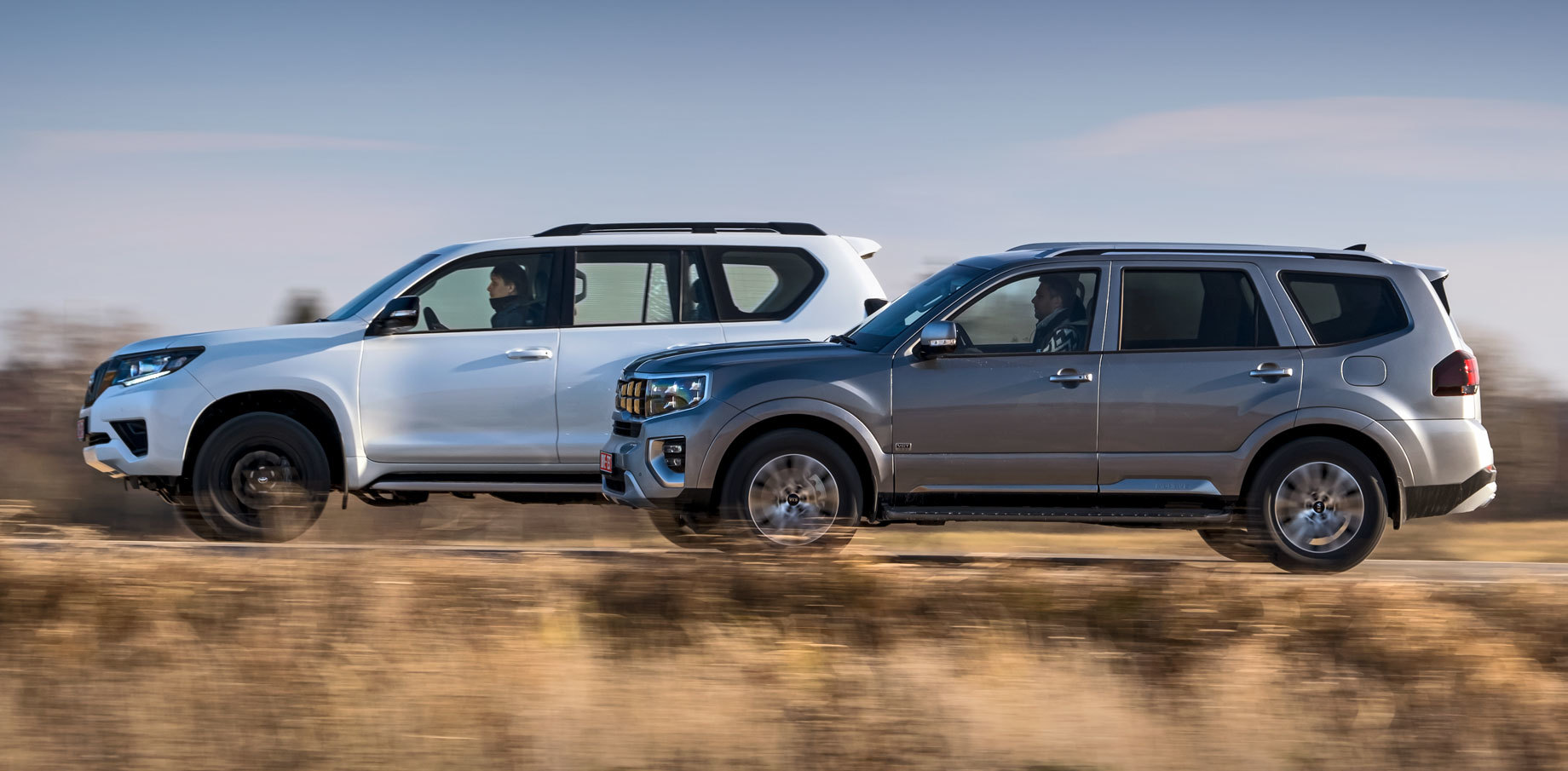
On ne peut pas dire que la sensibilité de la direction de la Kia soit plus élevée. Dans le même virage, le Mohave roulant demande encore plus de déflexion du volant que le Prado, et entre les positions extrêmes, il fait environ 3,2 tours contre exactement trois pour le Toyota. Cependant, le volant coréen est plus léger, plus propre en vibrations parasites, plus neutre en charge dans la zone proche du zéro. La réactivité, malgré le booster électrique, est plus informative, et la bande de roulement plus ferme.
En conséquence, la Mohave demande moins d’effort pour changer de cap et se sent plus réactive malgré le mouvement de roulis. Les deux voitures tiennent bien la ligne droite rapide, mais la Kia est plus confiante même en présence d’une ornière, ne nécessitant aucun coup de volant. Et elle s’oppose activement aux changements de ligne sans clignotant. De plus, le système de maintien de la trajectoire, grinçant et admonestant, est activé par défaut après le démarrage du moteur. Les assistants de Mohave grincent généralement trop pour diverses raisons.
Un moteur capricieux et flexible, la stabilité, un bruit tolérable, ainsi que le stéréotype d’une voiture à châssis robuste – sentez-vous comment se forme l’image héroïque d’un tel dévoreur d’espace ? Ainsi, l’ordinateur de bord, après avoir fait le plein d’un réservoir de 82 litres, promet une autonomie de croisière de plus de 435 miles… Mais pour les longs trajets, Mohave ne convient qu’à ceux qui peuvent s’installer dans un fauteuil qui m’a torturé derrière un volant déréglé. Et l’itinéraire est à prévoir sur des routes de qualité acceptable.
Les Coréens ayant refusé d’utiliser des ressorts pneumatiques, les deux voitures sont équipées de ressorts en acier. Sur l’asphalte, la douceur de roulement est comparable : les deux voitures à châssis placent les accents un peu différemment, mais elles détestent tout autant les joints et les ondes courtes. Le Prado, équipé de vérins hydrauliques de stabilisation, est plus dépendant du profil transversal de la chaussée, il semble plus dense, il donne des coups de pied plus intenses, bien qu’il arrondisse mieux les pics des accélérations verticales.

Mohave réagit plus vivement aux défauts du revêtement qu’aux courbes lisses, non sans flottement, comme s’il perdait brièvement le contrôle de lui-même. En outre, il collectionne les petites choses en abondance. Certes, il ne se balance pas d’un côté à l’autre, répétant le terrain, mais l’arrière-plan des masses non suspendues apparaît dans un plus grand nombre de situations.
Enfin, le Prado a une marge de tolérance tout à fait incomparable à celle du Mohave. J’essaie de déterminer la vitesse limite du dos d’âne – à un moment donné, je n’ai tout simplement plus assez d’espace pour accélérer. Je ne veux pas poursuivre l’expérience avec Kia après 25 miles/h. La limite confortable est de 18 miles/h. La limite confortable est de 18 miles/h. Et plus la route se dégrade, moins l’influence de la dynamique se fait sentir, plus la Toyota est confiante.
En principe, vous pouvez forcer le Mohave à balayer une route au sol irrégulier, il ne s’effondrera pas. Mais priez pour qu’il n’y ait pas de trou ou de tranchée sur le chemin. Car Mohave est comme moi : un gros citadin. Il semble qu’il y ait une sorte de couche qui absorbe les chocs, mais si vous vous retournez sur l’asphalte glissant, il s’avère qu’elle est osseuse. Et le Prado est rondouillard, à l’image de ces types trapus au cou plié qui l’empruntent.
À mon avis, la résistance au stress est coûteuse, et je pense donc que le Prado offre un meilleur rapport prix/qualité de conduite. Plus important encore, les roues de 18 pouces pour Kia sont basiques, et peu importe combien vous payez en plus, le Mohave ne deviendra pas plus doux. Et le Toyota peut être plus confortable en choisissant une version moins chère de l’Elégance Plus sans le système KDSS au lieu du Prestige. Il est rare, sur le marché de l’automobile, que l’économie conduise à une amélioration de la qualité de vie.
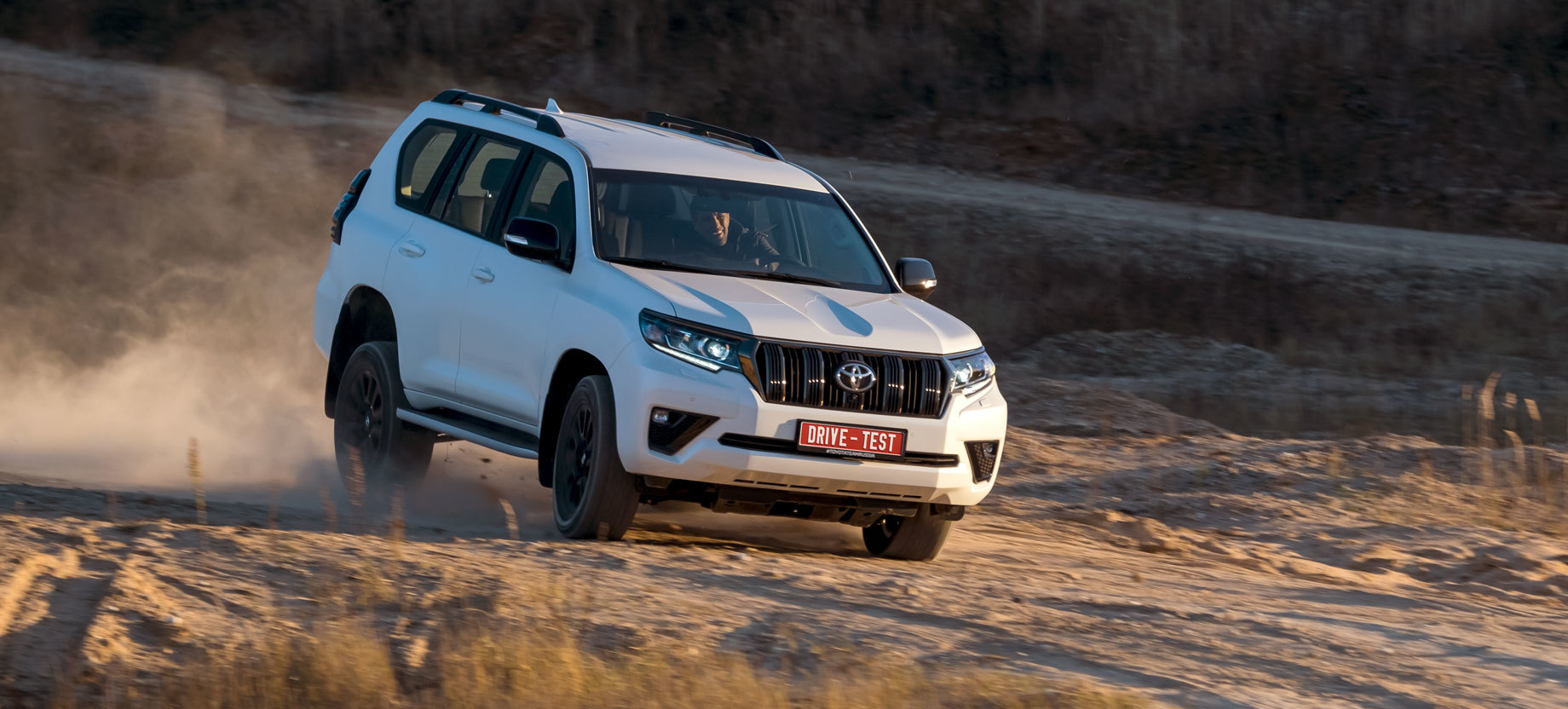
Il est encore moins logique de se mêler à la boue féroce cette fois-ci que lors des essais du Prado et du Pajero Sport. Et c’est encore plus vrai pour la gamme de réservoirs. La transmission Mohave est sans prétention : un embrayage multidisque électroniquement contrôlé transmet le couple aux roues avant. Auparavant, il existait au moins un mode 4H pour son blocage forcé, maintenant la distribution du couple le long des axes est à la merci de l’ordinateur. Le différentiel arrière à glissement limité n’est bloqué qu’à 50 %.
Toyota dispose d’une transmission intégrale permanente basée sur l’interaxe de Torsen, on peut bloquer à la fois le différentiel central et le différentiel inter-roues arrière. En outre, le Prado est géométriquement mieux préparé pour le tout-terrain. La garde au sol est plus importante, quel que soit le mode de conduite choisi. Et le Mohave, avec sa longue base, même s’il gravit une pente raide grâce à un réducteur, exige une trajectoire plus réfléchie, sinon il reste sur le rebord avec un longeron. En s’enfonçant dans le sable, ils ne sont pas en mesure de protéger de la déformation les marchepieds très larges et très bas qui facilitent l’accès à l’habitacle.
Je me limite à une sortie dans une sablière près de Ruza, mais même là, à une vitesse tout à fait inoffensive, je parviens à arracher le pare-chocs arrière. Le parapet surplombant ne laisse aucune chance à un long porte-à-faux et arrache le plastique dur avec les faux tuyaux d’échappement. L’incident est couvert par l’assurance, mais d’après le calcul demandé à KIA, mon erreur aurait coûté 1330 dollars : la liste des pièces de rechange à remplacer comporte huit positions, dont une doublure d’aile déchirée, et la liste des travaux en comporte onze.
Et si quelqu’un a besoin d’un œillet de transport situé en haut du cadre, à droite ? Il n’y a pas d’autre point d’attache à l’arrière. Même un très vieux pare-chocs non peint était dommage à écraser, alors que dire d’un pare-chocs neuf. Il n’est pas surprenant que les propriétaires de châssis Kia préfèrent installer une barre d’attelage. En même temps, les dispositifs de remorquage officiels pour le Mohave ne sont pas proposés. L’homologation du véhicule indique : « Le remorquage d’une remorque n’est pas prévu ». Mais il est prévu de durcir la procédure de modification de la conception.

L’œillet arrière du Prado est précisément destiné au remorquage – le pare-chocs ne s’embarrasse pas de son utilisation. Oui, et la barre d’attelage est présente dans le configurateur officiel de Toyota, et avec le câblage, si nécessaire. Le prix du Prado comprend donc non seulement une plus grande liberté de choix des destinations, mais aussi des accessoires de marque. Ayant observé la réaction des autres aux voitures d’essai dans le flux, je mentionnerai également la liberté de décision sur la route. Les autres usagers de la route sont plus tolérants à l’égard du comportement du Prado. D’où, d’ailleurs, les femmes qui conduisent des Toyota étroites. La physionomie insolite et impudente du Mohave n’est pas encore prise au sérieux.
Mais le marché de l’après-vente prend le Mohave sans rire. En fonction du kilométrage, les prix des véhicules de trois ans relookés varient de 41 500 à près de 50 000 dollars. Bien sûr, ce n’est pas le Prado, pour lequel tout commence à partir de 50.000 dollars, mais pour le « coréen », vous voyez, c’est excellent. Le V6 turbodiesel a une bonne réputation. Et, considérez-le, toute l’image de cette voiture est construite autour de lui. C’est pourquoi je n’ai rien à redire sur la manière dont ce profond restylage a été réalisé. Mais tout de même : quelle est la voiture qui présente le meilleur rapport entre le prix et les caractéristiques de consommation?
Il ne s’agit pas de Kia, car d’autres crossovers peuvent accomplir les mêmes tâches pour moins d’argent. En tout cas, c’est le nouveau Sorento. Et imaginez que Telluride, l’antipode de Mohave, avec une carrosserie porteuse, un moteur monté transversalement et un embrayage dans la traction arrière, arrive dans votre pays. Imaginez un instant qu’un turbodiesel s’y adapte, capable d’offrir la même dynamique que le V6 3.0. Dans ce cas, qui a besoin d’une voiture à châssis avec les réglages actuels du châssis, qui ne porte pas de charge idéologique, mais seulement un timestamp?
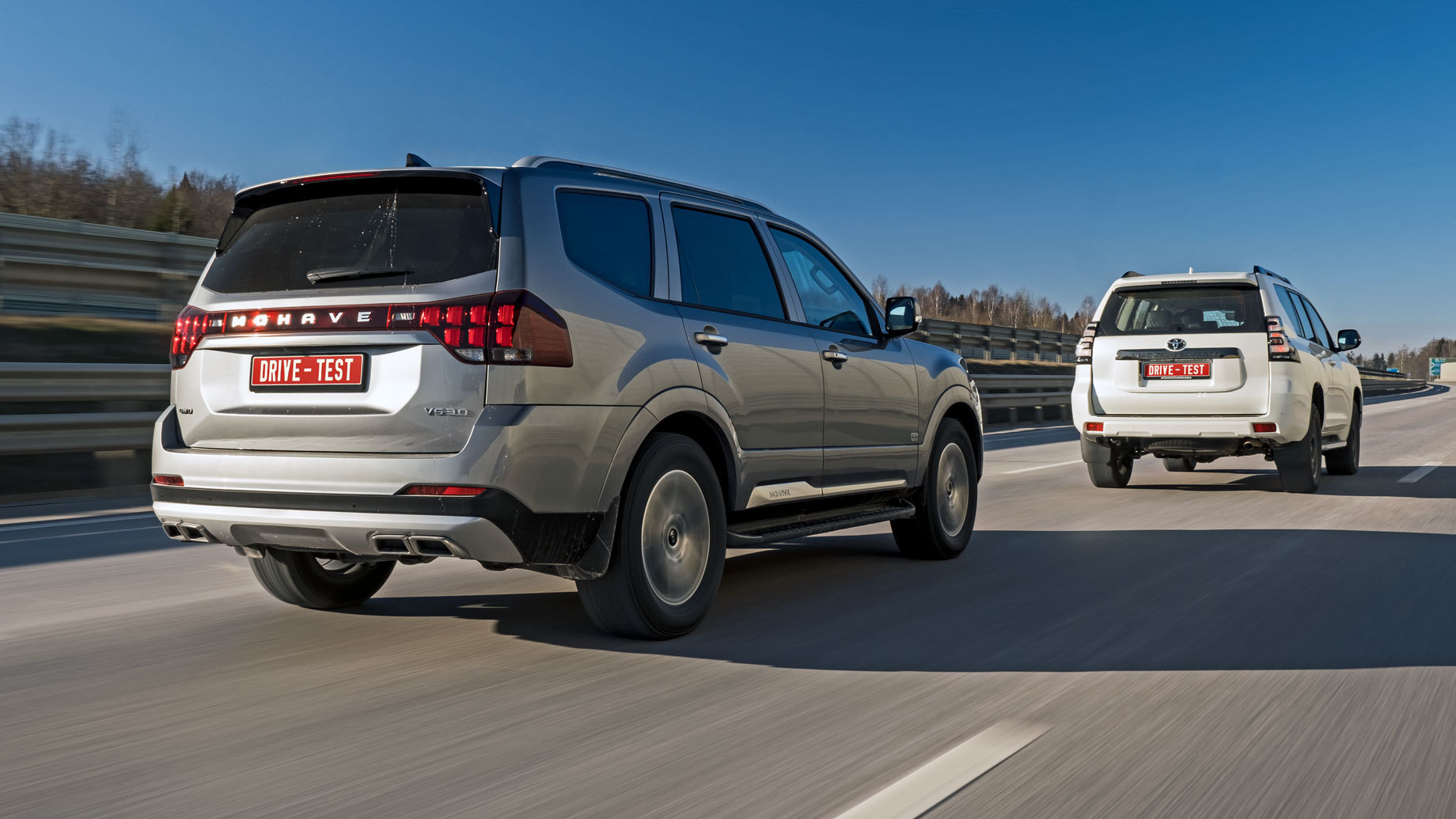
Toyota, à son tour, est une voiture très controversée. Mais regardez la réaction de la femme qui était au volant du Prado. C’est dur, bruyant, secouant pour elle, mais calme. On ne peut pas tromper le cœur d’une fille, il sent la fausseté. Et ici, elle n’existe pas. Si le Mohave brutal de l’âme est un bus scolaire, le Prado a ce qu’il a en tête, il a ce qu’il a sur la langue. Et il peut se débarrasser de son prix dans une telle merde, là où peu de gens plongent. Et il me semble que les hommes trapus et les mères de leurs enfants surpayent non pas pour une fiabilité légendaire, un bénéfice à la revente ou la chasse et la pêche, mais pour la simplicité et la sincérité des relations.
Il s’agit d’une traduction. Vous pouvez lire l’original ici : https://www.drive.ru/test-drive/kia/toyota/5fbe7fcdec05c4314700006e.html

Publié Août 04, 2022 • 12m à lire

